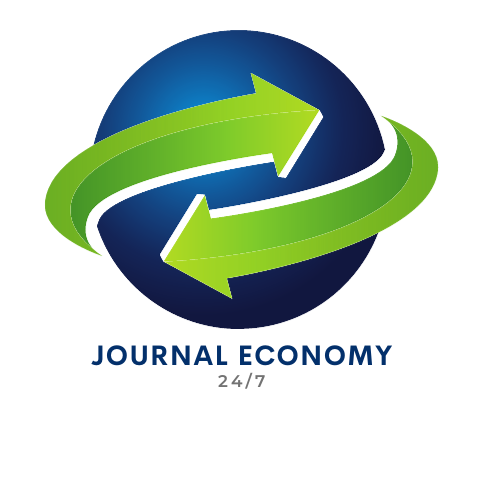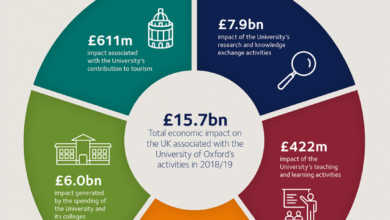
The vast disparity between developed and developing nations is a global issue that demands our attention. While the developed nations enjoy a high standard of living, robust healthcare, quality education, and advanced technology, the developing nations are often left grappling with poverty, poor infrastructure, and political instability. So, how can we bridge this gap and create a balanced global playing field? This blog post aims to discuss some possible solutions.
Understanding the Disparity Between Developing and Developed Nations (Global)
The inequity separating developing and developed countries is rooted in several complex variables. The legacy of colonialism plays a significant part in this disparity, where historical exploitation has left enduring economic and social scars. Geographical location can also hinder progress, with landlocked or isolated nations facing challenges to trade and resource accessibility. Additionally, socio-economic policies, both domestically and internationally, can either support or stunt a country’s growth and development.
Political instability is another contributing factor, leading to uncertainty and inconsistency in governance, which is detrimental to long-term development plans. These factors combined lead to an expansive gap in wealth, the quality of infrastructure, access to healthcare and education, and the integration of advanced technology.
With developing countries often struggling to keep pace with their developed counterparts, these disparities become cyclical, creating a loop of disadvantage that is hard to break free from. This cycle becomes even more complex when we consider issues like brain drain, where the migration of skilled workers from developing to developed nations further depletes the resources of the already struggling countries.
Understanding these disparities is the first step towards addressing them. Only by acknowledging and dissecting these contributing factors can we begin to develop effective strategies to bridge the gap and create a more equitable global playing field.
The Role of Global Aid and Trade in Bridging the Gap
Assisting developing nations through global aid and promoting fair trade practices could significantly alleviate the disparities they face. When targeted correctly, aid can reinforce vital sectors such as healthcare, education, and infrastructure, paving the way for growth and development. However, it’s essential for the aid to be directed towards initiatives that empower self-sufficiency rather than foster dependency.
On the trade front, ensuring that developing nations aren’t exploited is paramount. To achieve this, it’s crucial to advocate for trade policies that are advantageous to the economies of developing nations, enabling them to secure equitable returns for their goods.
Global aid should not be perceived as a one-way street. The recipient countries also need to implement systems to ensure the proper use of these resources. Transparent monitoring mechanisms and rigorous audits can ensure that aid reaches its intended beneficiaries and brings about actual change.
On the other hand, fair trade practices can uplift local economies, encourage job creation, and discourage the unethical exploitation of labor and natural resources. Such practices can allow developing countries to compete in global markets on more equal terms.
Developed nations, international entities, and private donors have the potential to play a significant role in this transition. By providing aid that focuses on long-term sustainable development and advocating for fair trade practices, they can contribute to creating a more balanced global landscape. It’s a collaborative process that requires ongoing commitment, adjustment, and diligence from all involved.

Investing in Education and Healthcare (Global)
Efficient investment in education and healthcare is a powerful means of bolstering development in struggling nations. A strong education system not only promotes individual growth but also fuels community development by fostering a knowledgeable and skilled populace. Investments should target increasing the accessibility of quality education, enhancing curricula to meet global standards, and training educators. This will create a foundation for a skilled workforce that can drive economic progress.
Simultaneously, a well-structured healthcare system is vital to maintain a healthy population that can actively contribute to their nation’s growth. Investments in healthcare need to focus on developing robust healthcare infrastructures, increasing the availability of affordable care, and improving health education. This also includes training health professionals, improving health facilities, and ensuring affordable medication and treatment options.
By committing to investments in these critical sectors, developing nations can establish the bedrock necessary for sustainable growth and development. This doesn’t just demand financial resources, but also requires comprehensive planning, efficient execution, and continuous monitoring and evaluation to ensure the efforts yield the desired outcomes. The role of developed nations and international organizations is significant in this regard. They can offer the necessary financial assistance, technical expertise, and policy guidance to help developing nations build robust education and healthcare systems.
Ultimately, these investments are an investment in people – their health, their education, their potential. When people thrive, so do their communities and, eventually, their nations. This makes education and healthcare investment a catalyst for change, sparking a chain reaction that could gradually close the gap between developing and developed nations.
Harnessing the Power of Technology for Development
In today’s digital era, the potential of technology as a driver of growth and development cannot be understated. Developing countries stand to benefit immensely from harnessing this power. Technological advancements can significantly bolster productivity, democratize access to knowledge, and become a springboard for innovation. Areas like digital learning can revolutionize education, making it accessible to all, irrespective of geographical boundaries. Likewise, the advent of telemedicine can make healthcare services available to the remotest corners, overcoming infrastructural limitations.
Renewable energy is another area where technology can play a transformative role. It can provide a sustainable solution to energy scarcity, a problem that plagues many developing nations. The transition to renewable energy sources like solar or wind can not only provide reliable power but also create jobs and stimulate local economies.
However, leveraging these technological advances requires a supportive ecosystem. The digital divide, characterized by a lack of access to technology, internet connectivity issues, and a lack of digital literacy, can hinder the adoption of these technologies. Therefore, it’s crucial for developing countries to receive necessary support in terms of funding for infrastructure development, training programs to enhance digital literacy, and policy support to encourage the adoption of technology. This support can come from developed nations, international organizations, and private sector players who are keen on making a difference.
With the right support, developing nations can embrace technology as a catalyst for their development, allowing them to make substantial strides towards bridging the gap with their developed counterparts. Its effective utilization depends on the broader socio-economic and political context, underscoring the need for comprehensive and inclusive development strategies.
Addressing Political Instability and Corruption
The hurdles of political instability and corruption often stand in the way of a nation’s path to development. Mismanagement of resources, ineffective governance, and the erosion of public trust are all detrimental consequences of these issues. To tackle them head-on, it is imperative for developing nations to focus on constructing robust, transparent, and responsible institutions.
This process could include implementing measures such as stricter regulations, increased transparency in public spending, and establishing independent oversight bodies. Additionally, the adoption of technologies could also aid in improving transparency and reducing opportunities for corruption.
Corruption can also be tackled by enhancing the legal framework, strengthening law enforcement, and ensuring that corruption cases are investigated and punished. Encouraging citizen participation in governance and promoting open dialogue about political and social issues can also contribute to political stability.
International organizations can play a crucial role in assisting this transformation. They can provide not just funding but also expertise, training, and support in setting up anti-corruption measures and building robust public institutions. Encouragingly, several international conventions and treaties focus on fighting corruption on a global scale, providing frameworks that countries can adopt.
Political stability is also critical for attracting foreign direct investment, which can be an essential driver for economic growth. This makes tackling political instability and corruption not only a moral imperative but also a key factor in economic development and growth.
In the end, addressing these issues is about fostering a culture of accountability, transparency, and good governance. This can help lay the foundation for sustainable development and bring us closer to bridging the gap between developing and developed nations.

Promoting Environmental Sustainability
Undeniably, the consideration of environmental sustainability is crucial for development strategies. The potentially devastating effects of climate change and the rampant degradation of our environment disproportionately impact developing nations, making it essential to integrate sustainable practices in their path towards development. This involves a two-pronged approach – encouraging economic progress while safeguarding our natural resources.
Investments in renewable energy sources, such as wind and solar power, can serve a dual purpose. Not only do they offer a sustainable solution to energy shortages, but they can also stimulate economic growth by creating jobs and fostering innovation. Equally important are sustainable agricultural practices. They can enhance food security, promote biodiversity, and improve livelihoods, particularly in rural areas where agriculture is a significant source of income.
Conservation efforts, such as preserving natural habitats and implementing effective waste management systems, also play a vital role. They help maintain biodiversity, ensure the availability of clean water, and contribute to the health and wellbeing of the population.
In the pursuit of environmental sustainability, the support from developed nations, international organizations, and the private sector can be transformative. They can provide financial aid, technological solutions, and policy guidance. At the same time, it’s also crucial for developing nations to foster public awareness about the importance of sustainability and encourage community participation in conservation efforts.
By intertwining environmental sustainability with development initiatives, we can work towards a future where economic progress does not come at the expense of our planet. This integrated approach can bring us one step closer to narrowing the gap between developing and developed nations.





